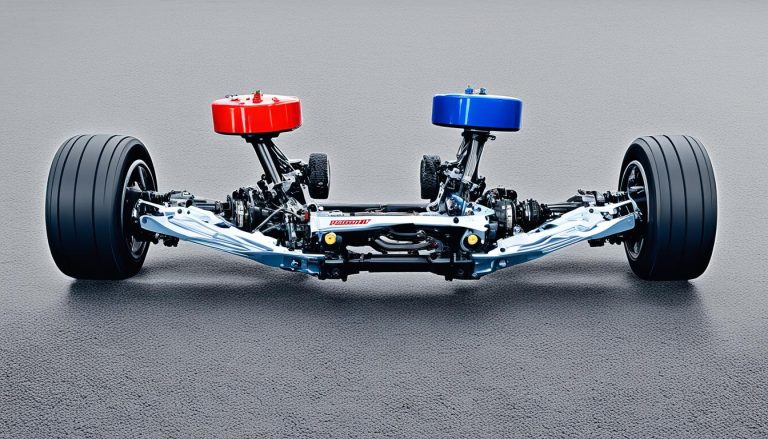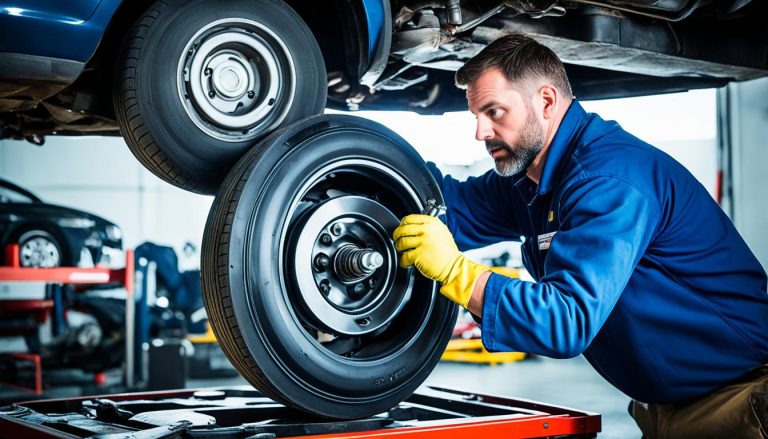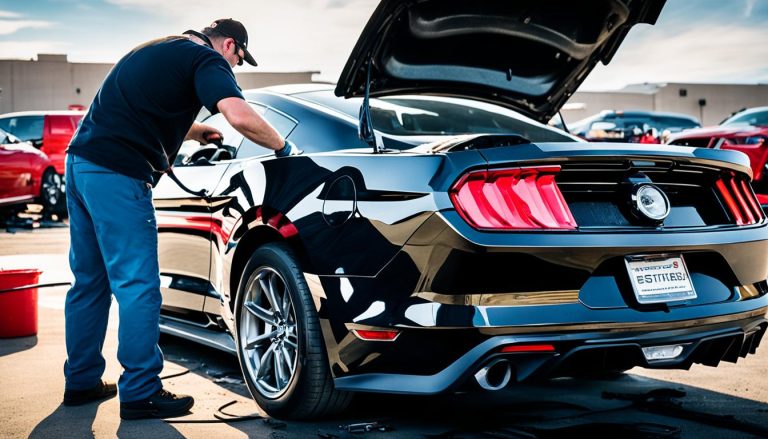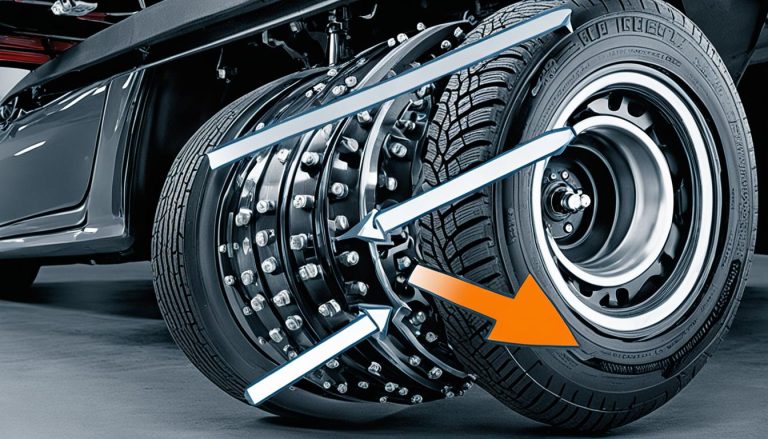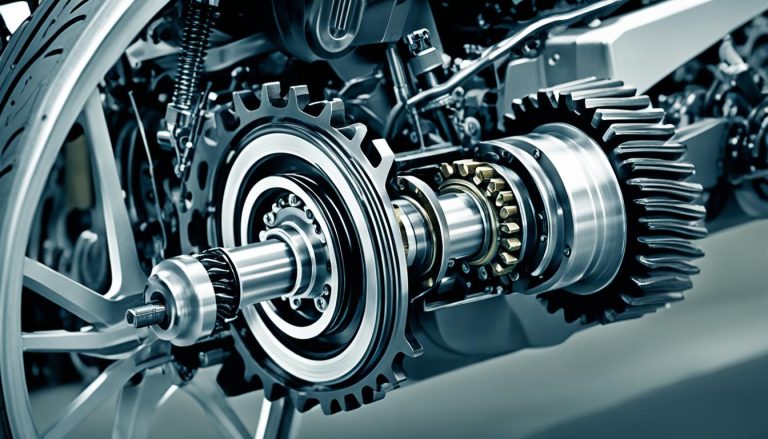3.15 vs 3.55 Limited Slip Rear Axle Explained
If you’re passionate about optimizing your vehicle’s performance, grasping the difference between 3.15 and 3.55 limited slip rear axle is a critical step. The rear axle ratio of your ride directly influences not only acceleration but also handling and fuel efficiency. Whether you’re merging onto highways or hauling heavy loads, understanding how 3.15 vs 3.55 limited slip rear axle ratios affect your driving experience matters.
Let’s talk gear ratios. Simplified, they refer to the number of revolutions your driveshaft needs to make to turn your wheels once around. If you prefer a relaxed cruise with better miles per gallon, the 3.15 gear ratio might be your ally. On the other hand, if it’s towing power or spirited sprints off the line that you’re after, the 3.55 could be calling your name. Either way, traction is the name of the game, and limited slip differentials make sure you’ve got it where it counts.
Key Takeaways
- Understanding the gear ratios is essential for vehicle performance tuning.
- The 3.15 ratio is generally better for fuel efficiency and highway driving.
- A 3.55 gear ratio enhances power for improved acceleration and towing.
- Limited slip differentials are crucial for maintaining traction and control.
- Choosing a rear axle ratio depends on your driving needs and conditions.
Understanding Limited Slip Differentials and Their Importance in Vehicles
When driving conditions become challenging, the technology underpinning your vehicle’s performance becomes crucial. One such technological marvel is the limited slip differential (LSD), which enhances traction and stability across a variety of terrains. This advanced mechanical system is what stands between an ordinary ride and a control-enhanced driving experience, particularly when navigating through adverse conditions. Improving traction with limited slip rear axles is paramount for drivers who value safety and performance on the road.
What Is a Limited Slip Differential?
A limited slip differential stands as a significant upgrade over the traditional open differential, specifically engineered to provide better traction by automatically redistributing power to the wheel that has the most grip. Whether you’re taking on a sharp curve or hitting an icy patch, the LSD works quietly behind the scenes, ensuring that a slip on one wheel doesn’t spell a loss of control. Unlike its open counterpart, a limited slip rear axle prevents excessive power from being wasted on a spinning wheel, making it a critical component in your quest for optimal drivability.
Benefits of Limited Slip Rear Axles in Traction Management
The benefits of limited slip rear axles are rooted in their ability to maintain power distribution efficiently between the wheels. On slick or uneven surfaces, where wheel spin can degrade your control, the limited slip differential system ensures that torque is sent to the wheel with the most traction. This system not only transforms how your vehicle responds in low traction situations, but it also provides a substantial advantage for off-roading adventures, where consistent power is crucial for overcoming challenging terrains and obstacles.
By vastly improving traction with limited slip rear axles, you’re not just enhancing your vehicle’s capability; you’re investing in peace of mind. Whether you find yourself on a rain-slicked road or a dusty, uneven trail, the adaptability and responsiveness provided by an LSD can make all the difference—keeping you safer while delivering a more engaging driving experience.
The Difference Between 3.15 and 3.55 Limited Slip Rear Axle
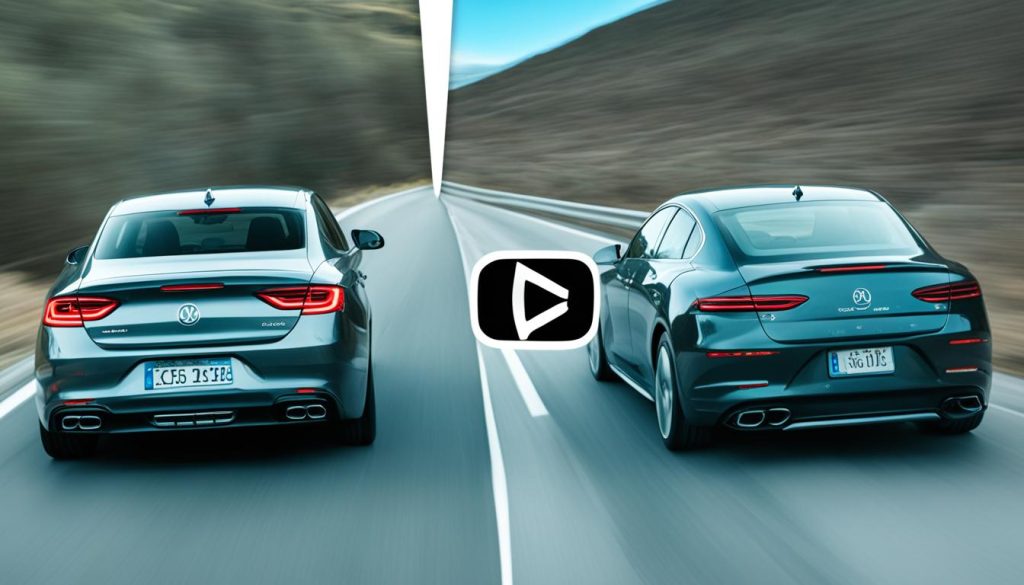
When you’re considering performance upgrades for limited slip rear axles, understanding the distinction between 3.15 and 3.55 ratios can greatly impact your driving experience. The fundamental difference between these two lies in their gear ratios—a critical aspect that directly influences torque, acceleration, and fuel economy of your vehicle.
A 3.15 axle ratio translates into fewer driveshaft rotations for every turn of the wheels, which results in lower torque. This setup is tailored for those who prioritize fuel efficiency during long highway drives, as it operates at lower RPMs, thereby conserving fuel. Conversely, the 3.55 rear axle ratio provides more driveshaft rotations with each wheel turn, equipping your vehicle with increased torque and potent acceleration—ideal for quick starts and efficient towing capabilities.
However, while choosing the right rear axle ratio, it’s important to consider the trade-offs. With a 3.55 ratio, you may experience a slight dip in fuel economy on highways due to the higher RPMs, while benefiting from improved performance in high-demand situations like towing or spirited driving.
| Gear Ratio | Torque | Acceleration | Fuel Economy | Best Usage Scenario |
|---|---|---|---|---|
| 3.15 | Lower | Gradual | Higher (on highways) | Highway cruising |
| 3.55 | Higher | Rapid | Lower (on highways) | Performance driving, towing |
Whether you’re upgrading your vehicle for casual driving or for performance, the choice between a 3.15 and 3.55 limited slip rear axle will determine the adaptability and capability of your car across various driving conditions. Bearing these considerations in mind will guide you in making an informed decision tailored to your driving habits and the demands you place on your vehicle.
Exploring the 3.15 Limited Slip Rear Axle Ratios
Delving into the specifics of rear axle differentials, particularly the 3.15 limited slip differential, unveils a crucial aspect of vehicle performance and fuel efficiency. This ratio is often preferred by those prioritizing long-distance journeys and economic fuel consumption over, say, high-performance takeoffs or off-road capabilities. Before deciding if the 3.15 LSD is the right choice for you, let’s examine the benefits and potential drawbacks it presents.
Pros of Using a 3.15 Limited Slip Rear Axle
Choosing the 3.15 LSD for your vehicle is beneficial in several ways. One of the most significant advantages is the improvement in fuel efficiency, attributed to the lower RPMs your vehicle maintains while cruising on highways. This not only saves you on fuel costs but also ensures quieter and smoother trips.
- Better fuel economy at cruising speeds
- Reduced noise and engine wear due to lower RPMs
- Stable and smooth acceleration
- Enhanced traction control without the aggressive acceleration of higher ratios
When it comes to determining the optimal rear axle ratio for your travel habits and driving needs, considering these benefits is key to making a well-informed decision.
Cons and Considerations for 3.15 Rear Axle Configuration
While the 3.15 ratio is conducive to a less aggressive driving experience, it may not be the ideal selection for everyone. Specifically, drivers who prefer dynamic and swift takeoffs might find this configuration less thrilling, as it provides lower torque output compared to higher gear ratios. Additionally, the 3.15 LSD might not be the best choice for heavy-duty off-road excursions where assertive torque is necessary to navigate through rough terrains with ease.
- Potentially slower takeoffs and less dynamic acceleration
- May not be suitable for high-performance driving experiences
- Less effective for heavy-duty towing or rigorous off-road challenges
Ultimately, when you’re in the market for a rear axle differential, it’s paramount to weigh these pros and cons against your personal preferences and driving conditions. Fuel efficiency and economic benefits are hallmark advantages of the 3.15 LSD, but the trade-off is the lower torque output and, thus, potentially less versatility in performance scenarios.
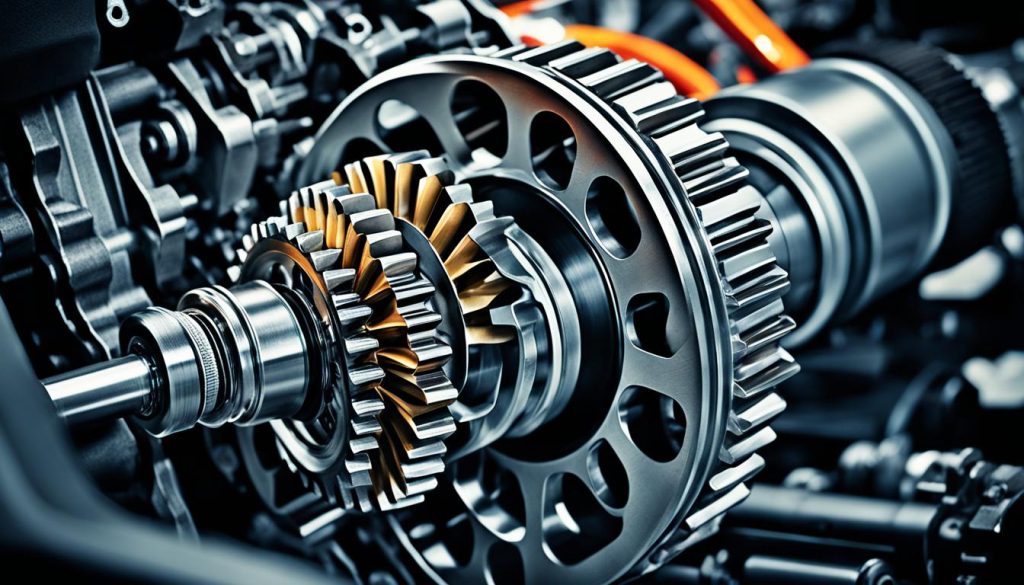
Diving into the Characteristics of the 3.55 Limited Slip Rear Axle
If you’re in the market for a vehicle that delivers powerful performance, particularly in terms of acceleration and off-road capability, you’ll find that the 3.55 limited slip differential offers distinct advantages that may align with your driving preferences. This particular rear axle ratio is renowned for its ability to enhance a vehicle’s dynamism, which we will further explore, helping you in choosing the right rear axle ratio for your needs.

Understanding the Enhancement in Performance with 3.55 Ratios
With a 3.55 limited slip differential, you can expect a noticeable improvement in the “get-up-and-go” of your vehicle. This configuration is particularly advantageous when you need that extra bit of grunt during take-offs, as it delivers a greater amount of torque to the wheels compared to lower ratios. The result is a more responsive and energetic driving experience with enhanced acceleration, which is essential when tackling steep inclines or when a burst of speed is required for overtaking.
When to Opt for the Higher 3.55 Gear Ratio
The 3.55 gear ratio shines in scenarios that demand robust power delivery. If off-road performance is a regular part of your automotive adventures, this gear ratio will provide you with superior climbing prowess and the ability to traverse rugged terrain smoothly. It’s also the go-to choice for drivers who frequently haul or tow, as the increased torque output ensures that heavy loads will be moved without undue strain.
Choosing a vehicle that matches your driving requirements is crucial, and the 3.55 limited slip differential signifies a commitment to powerful, versatile performance. Even though the fuel economy might see a slight dip during long highway jaunts, the trade-off includes a remarkable leap in driving pleasure and capability, especially for those who drive in demanding conditions or who enjoy off-road thrills.
Choosing the Right Rear Axle Ratio: Factors to Consider
When **choosing the right rear axle ratio** for your vehicle, you’re making a decision that affects your car’s performance, efficiency, and suitability for specific tasks. It’s like selecting the right tool for a job – and, with vehicle performance, you want the best fit for your driving needs. Are you the type to revel in the roar of the engine as you tow heavy loads or navigate rugged terrains? Then the 3.55 ratio, known for its enhanced towing capability and superior power delivery, may speak to your soul.
Alternatively, if your travels mostly consist of long stretches on highways and you value the silence of an efficient ride, a 3.15 rear axle ratio could be your silent guardian, ensuring fuel efficiency and a smoother journey. This decision is not just about the numbers; it’s about syncing with your personal driving style and aligning with your vehicle’s intended usage. **Determining the optimal rear axle ratio** is, therefore, a blend of technical insights and understanding your own transit narratives.
So take the wheel of knowledge, think about where your travels take you, the loads you carry, and how you want your vehicle to handle those roads less traveled. Whether it’s the persistent pull of a 3.55 ratio for those demanding scenarios or the economic whisper of a 3.15 for cruising efficiency, your choice defines the drive. Dive deep into the characteristics of your daily routes, the personality of your driving, and ensure that your selection sets the stage for many smooth and powerful miles ahead.
FAQ
What’s the main difference between a 3.15 and a 3.55 limited slip rear axle?
The primary difference lies in the gear ratios and their impact on performance. A 3.15 ratio offers fewer driveshaft rotations for each wheel turn, which can mean less torque but better fuel efficiency, while a 3.55 ratio gives more driveshaft turns per wheel revolution, leading to increased torque and improved acceleration, especially beneficial for towing and performance driving.
What is a Limited Slip Differential (LSD)?
An LSD is a type of differential that automatically redistributes power to the driven wheels with the most traction when slippage is detected. This ensures more controlled and effective power delivery across various driving conditions, improving overall vehicle handling, particularly in low-traction scenarios.
How do limited slip rear axles improve traction management?
Limited slip rear axles enhance traction by proportionally distributing torque between the wheels when slippage occurs. This prevents excessive wheel spin and maintains stability, which is especially useful in slippery conditions like wet or icy roads, and during off-roading or high-performance driving.
What are the benefits of choosing a 3.15 limited slip rear axle?
Opting for a 3.15 limited slip rear axle provides better fuel economy at cruising speeds, smooth acceleration, and stability. It’s less aggressive in acceleration compared to higher ratios but offers a balanced driving experience overall, making it suited for long-distance highway travel.
What are the disadvantages of a 3.15 rear axle configuration?
While a 3.15 axle ratio can improve fuel efficiency, it may also result in less dynamic takeoffs and might not be as effective for performance driving. It can also have limitations during heavy-duty tasks like towing or intense off-roading compared to higher gear ratios like the 3.55.
In what scenarios is a 3.55 limited slip rear axle advantageous?
The 3.55 limited slip rear axle shines in situations that require strong acceleration from a standstill, superior climbing ability, and enhanced traction, such as spirited driving, off-roading, towing, and driving on winding roads. It’s designed for those who prioritize power and responsiveness over fuel economy during highway cruising.
When should I select a 3.55 gear ratio over a 3.15?
You should consider the 3.55 ratio if you need better performance for activities like towing, off-road adventures, or desire more immediate acceleration. This ratio is more suitable for drivers who are less concerned about fuel consumption on highways and more interested in vehicle responsiveness and power delivery.
How do I determine the optimal rear axle ratio for my vehicle?
To choose the right rear axle ratio, consider factors such as your typical driving conditions, vehicle use (towing, off-roading, etc.), performance expectations, and fuel economy preferences. Assessing these will help you match the rear axle ratio to your driving style and requirements.

